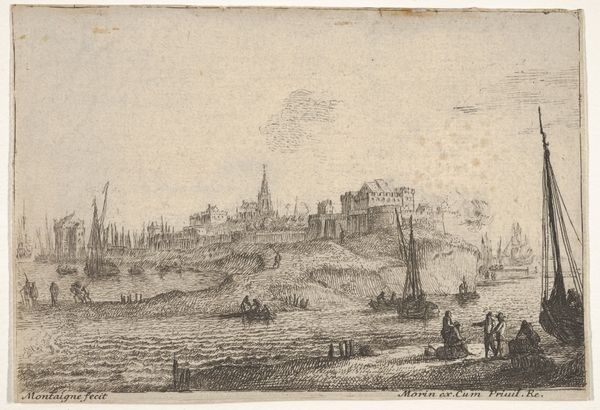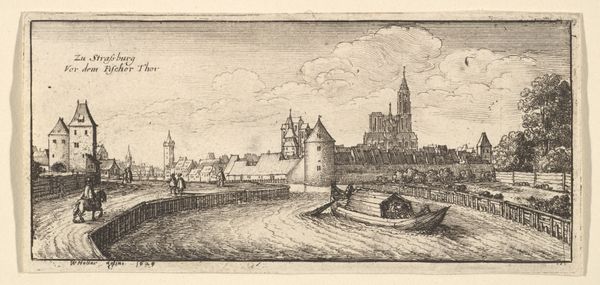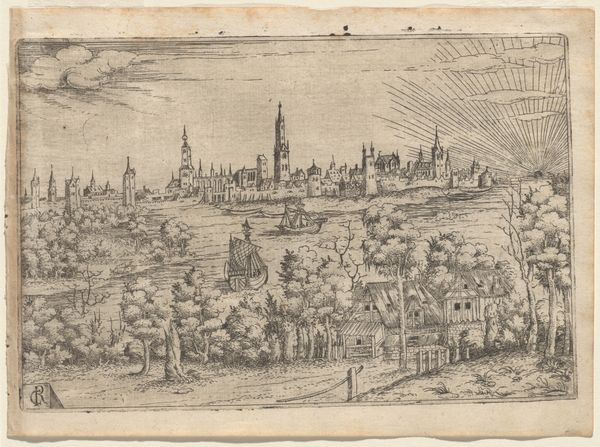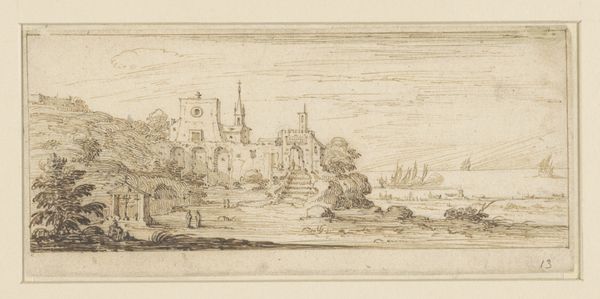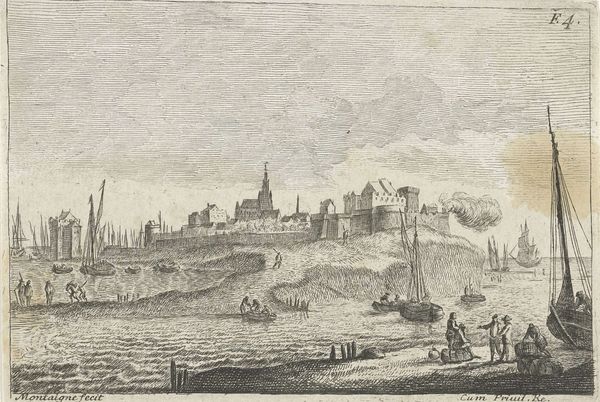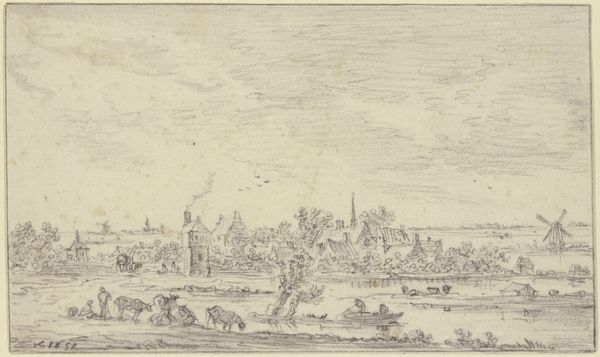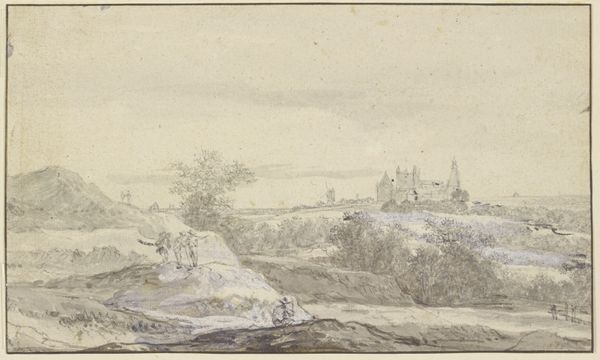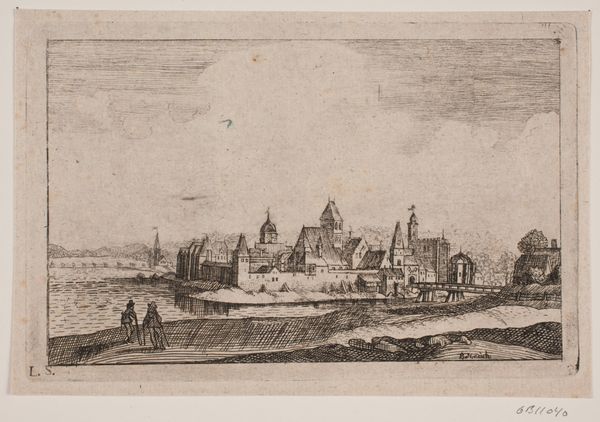
Ansicht eines Dorfes mit Kirche und Windmühle, Arbeiter mit Schubkarren, links Mann mit Hund
0:00
0:00
drawing, pencil, chalk
#
drawing
#
baroque
#
landscape
#
pencil
#
chalk
Copyright: Public Domain
This drawing, "View of a Village with Church and Windmill," was made by Karel la Fargue in the 18th century. La Fargue was active during the Enlightenment, a period defined by reason and individualism which challenged traditional hierarchies. Looking closely, we see workers with wheelbarrows going about their labor. This image reflects the economic structures of the time, where the working class was integral to the functioning of society but were often unseen and unheard. The drawing quietly acknowledges their presence. It invites reflection on class distinctions in the 1700s, and how some people were able to transcend and were able to be recognized as artists. La Fargue's delicate lines portray a tranquil village scene, contrasting the labor of the working class with the peaceful backdrop. This drawing invites us to consider how economic forces shaped the lives and landscapes of 18th-century Dutch society. It serves as a gentle reminder of the lives that were built into the foundations of the world we have inherited.
Comments
No comments
Be the first to comment and join the conversation on the ultimate creative platform.
